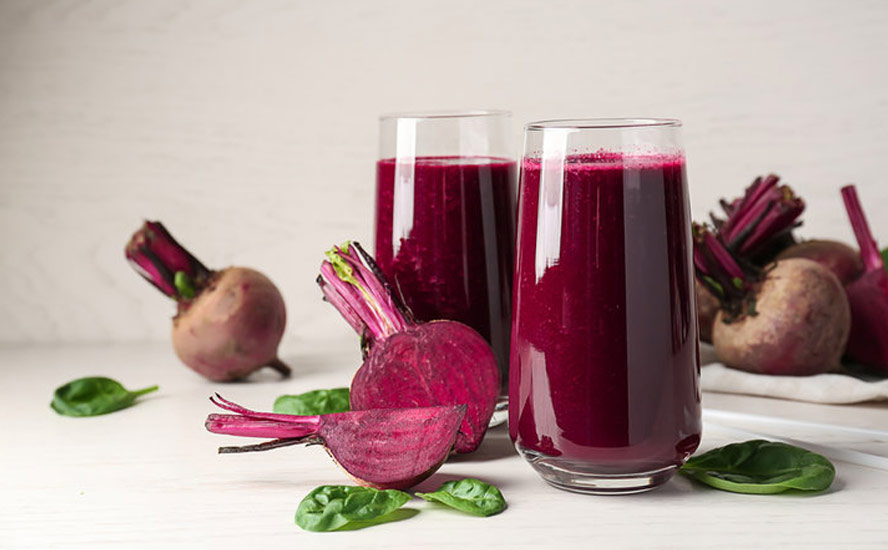5 reasons food will get scarcer and more expensive – Richard Mills
2023.05.11
The days of affordable food may now be a distant memory. Following months of steady decline, the price of food commodities remains well above pre-pandemic levels, and is now showing signs of a rebound.
In April, the United Nations food agency’s world price index rose for the first time in a year, reflecting higher prices for sugar, meat and rice. Although the UN gauge is still 20% lower than the record set in March 2022, when Russia’s invasion of Ukraine disrupted grain exports, concerns over inflation never left.

Grocery prices still remain historically high in many regions, straining consumer budgets and worsening a hunger crisis.
Many believe that while food commodities may not reach the highs of 2022 anytime soon, our grocery bills aren’t getting any cheaper in the foreseeable future. This is due to several intertwining factors at play:
- Rising Input Costs
Most of the time, rising food prices are simply down to higher costs.
The world’s food markets are so interconnected that inflationary pressure in one market can creep into another, and producers have no choice but to raise prices. Indeed, input costs faced by food producers — such as labor, packaging and energy — have all shot up around the world over the past year.
According to Joseph Glauber, former chief economist at the U.S. Department of Agriculture, around 75% of the food costs come after it leaves the farm. “It’s energy costs. It’s all the processing costs. All the transportation costs. All the labor costs,” he said in a recent interview with the Associated Press.
One fruit and vegetable seller in Budapest told the AP that wholesale costs have risen by 20% to 30%, and his customers are increasingly unable to cope with the biggest spike in food prices in the EU.
And many of those costs are embedded in so-called “core inflation”, which Glauber noted excludes “volatile food and energy prices and has proven stubbornly hard to wring out of the world economy.”
In Britain, food prices are now tied with energy bills as the top concern. The official measure of food price inflation in the UK reached its highest since 1977 earlier this year at 19.1%, and retailers are expecting prices to continue rising this year.
- Inflationary Pressures
However, a new report by Fitch Ratings revealed that food price inflation can remain elevated despite falling energy and other commodity prices.
In the report, the rating agency said that the food component of consumer inflation rates has continued to rise even as many of the primary inputs used in food production have dropped significantly, adding that:
“Many of the upstream cost pressures which drove food prices higher, from raw commodities to fertilizers and energy are now falling rapidly. But long lags in the pass-through of primary input costs and broader pressures on wages, rents and distribution costs are keeping retail inflation rates high.”
The resilience of food prices partly reflects the fact that manufacturers and retailers face broader costs than just the price of primary inputs, the report said. These broader costs, according to Fitch, may include rising wages in the labor-intensive retail segments ((i.e. grocery stores and restaurants).
Additionally, Fitch indicated that it can take as long as a year for the effects of declining input costs to impact retail prices.
- Supply Chain Risks
As Fitch’s report pointed out, higher food prices have been driven not just by raw commodity prices but also by an increase in costs along the supply chain.
Following Russia’s invasion of Ukraine in 2022, producers have been heavily impacted by supply chain disruptions that caused the prices of grains like soybeans and vegetable oils to spike.
Though the supply shocks have somewhat subsided, concerns over food insecurity remain elevated as inflation-adjusted prices in 2023 are still above the average level for recent years (see below).

It’s fair to say that the war could continue to have a significant effect on global food supplies. Prior to the war, Ukraine’s top export was agricultural products, while Russia produced about 25% of the world’s nitrogen fertilizer and is a major supplier of energy to the European Union. Wheat exports from the two nations accounted for 28% of the world’s total.
A food crisis of any magnitude also accentuates a rising demand for food. One study found that global food demand will increase by between 35% and 56% over the period 2010-2050, driven mainly by population growth and economic development.
“As economies recover from significant slowdowns, demand will increase, exerting upward pressure on food prices,” Food and Agriculture Organization’s Chief Economist Maximo Torero said in a Reuters note.
For instance, FAO’s sugar price index surged 17.6% from March, hitting its highest level since October 2011, which the organization links to concerns of tighter supplies following downward revisions to production forecasts for India and China. The meat index also rose 1.3% month-on-month.
“The increase in rice prices is extremely worrisome and it is essential that the Black Sea initiative is renewed to avoid any other spikes in wheat and maize,” said Torero, referring to a deal to allow the export of Ukrainian grain via the Black Sea.
In a separate report on cereals supply and demand, the FAO forecast world wheat production in 2023 of 785 million tonnes, slightly below 2022 levels.
- Extreme Weather
As much as supply chain disruptions have weighed on food prices, they are probably not as long-lasting as climate change. A study recently published in Nature found that extremely hot and dry events around the globe have consistent negative effects on the yields of all inspected crop types.
In California, which has now been hit by droughts for four consecutive years, rice farmers reportedly sowed the lowest number of seeds since the 1950s, equivalent to about half of a typical season. Wheat harvest also fell 25% last year in the US as drought-hit midwestern states like Kansas.
Snow, torrential rains and massive floods also tormented US farmers. For example, the Salinas Valley, known as the nation’s “salad bowl” growing more than 60% of its lettuce, had reduced planting due to intense rainfall and flooding.
It is estimated that severe weather events like Hurricane Nicole in Florida contributed to a 40% rise in US vegetable prices in the past year, and 2023 would be no different.
“This year is extreme,” Brad Rubin, sector manager for specialty crops within Wells Fargo’s Agri-Food Institute, told USA Today. “The amount of wet weather and a cold spring delayed plantings in major areas of California.”

A similar tune is sung across the world. India, the second-largest food producer, is facing another year of extreme weather after recording its hottest February in over a century; southern Europe’s farmers are still dealing with a crop crisis following months of drought; and the Horn of Africa is about to record a sixth consecutive season of failed rainy season.
The World Food Programme (WFP), citing extreme weather events, has forecast that 345.2 million people will be “food insecure” in 2023. This is more than double the number in 2020, when the Covid-19 pandemic started.
- Food Brands Struggling
Perhaps an overlooked contributing factor is how many of our favorite food brands have so far struggled to cope with the many crises unleashed by war and climate change, leading them to pass costs down to consumers.
What best encapsulates the combination of climate-induced crop failings, war-fuelled energy problems and import dilemmas that the food industry is dealing with simultaneously is a “polycrisis”.
Now a buzzword within World Economic Forum (WEF) quarters, the term “polycrisis” is described as “a cluster of related global risks with compounding effects, such that the overall impact exceeds the sum of each part”. Such risks range from the cost-of-living crisis, which the WEF ranks as the most severe global risk within the next two years, to large-scale involuntary migration and erosion of social cohesion.
While businesses have been dealing with risks such as geopolitical tensions and natural disasters for centuries, others, like ecosystem collapse and the consequences of failing to mitigate climate change, feel more like uncharted territory. This is especially true for the food and agricultural industry.
According to the World Benchmarking Alliance’s 2021 Food and Agriculture Benchmark report, the sector is not on track to realize a sustainable food system, let alone one that is resilient enough to weather repeated global blows such as pandemics, wars and energy crises.
The report, which measured and ranked 350 of the world’s most influential companies in the sector accounting for upwards of half of the planet’s food and agriculture revenue, found that over three-quarters of them had a sustainability strategy in place, but only 26% had set holistic time-bound targets.
Furthermore, as many as 80% of the companies did not provide any evidence that they are improving accessibility and affordability of nutritious food, the report said.
According to the World Benchmarking Alliance, the vast majority of companies are still “holding on to outdated strategies and continuing business as usual.” Meanwhile, governments are having to bail out some of these companies due to untenable energy and fertilizer costs, with higher prices inevitably being passed down to consumers.
Ruediger Hagedorn, a director at the Consumer Goods Forum, told Reuters that while food and agriculture companies are, on the whole, reasonably prepared for future shocks, “what they are not prepared for is subsequent events, like we have been seeing.”
Nestlé, the world’s largest food group, warned that the price of staple items will rise further this year, having already hiked prices of its coffee and chocolate bars by 8.2% in 2022. Other consumer giants like Unilever and Coca-Cola have also flagged price increases this year.
“We’re probably past peak inflation, but we’re not yet at peak prices,” Unilever’s chief financial officer Graeme Pitkethly told journalists earlier this year.
Richard (Rick) Mills
aheadoftheherd.com
Subscribe to my free newsletter
Legal Notice / Disclaimer
Ahead of the Herd newsletter, aheadoftheherd.com, hereafter known as AOTH.
Please read the entire Disclaimer carefully before you use this website or read the newsletter. If you do not agree to all the AOTH/Richard Mills Disclaimer, do not access/read this website/newsletter/article, or any of its pages. By reading/using this AOTH/Richard Mills website/newsletter/article, and whether you actually read this Disclaimer, you are deemed to have accepted it.
Any AOTH/Richard Mills document is not, and should not be, construed as an offer to sell or the solicitation of an offer to purchase or subscribe for any investment.
AOTH/Richard Mills has based this document on information obtained from sources he believes to be reliable, but which has not been independently verified.
AOTH/Richard Mills makes no guarantee, representation or warranty and accepts no responsibility or liability as to its accuracy or completeness.
Expressions of opinion are those of AOTH/Richard Mills only and are subject to change without notice.
AOTH/Richard Mills assumes no warranty, liability or guarantee for the current relevance, correctness or completeness of any information provided within this Report and will not be held liable for the consequence of reliance upon any opinion or statement contained herein or any omission.
Furthermore, AOTH/Richard Mills assumes no liability for any direct or indirect loss or damage for lost profit, which you may incur as a result of the use and existence of the information provided within this AOTH/Richard Mills Report.
You agree that by reading AOTH/Richard Mills articles, you are acting at your OWN RISK. In no event should AOTH/Richard Mills liable for any direct or indirect trading losses caused by any information contained in AOTH/Richard Mills articles. Information in AOTH/Richard Mills articles is not an offer to sell or a solicitation of an offer to buy any security. AOTH/Richard Mills is not suggesting the transacting of any financial instruments.
Our publications are not a recommendation to buy or sell a security – no information posted on this site is to be considered investment advice or a recommendation to do anything involving finance or money aside from performing your own due diligence and consulting with your personal registered broker/financial advisor.
AOTH/Richard Mills recommends that before investing in any securities, you consult with a professional financial planner or advisor, and that you should conduct a complete and independent investigation before investing in any security after prudent consideration of all pertinent risks. Ahead of the Herd is not a registered broker, dealer, analyst, or advisor. We hold no investment licenses and may not sell, offer to sell, or offer to buy any security.
Legal Notice / Disclaimer
Ahead of the Herd newsletter, aheadoftheherd.com, hereafter known as AOTH.Please read the entire Disclaimer carefully before you use this website or read the newsletter. If you do not agree to all the AOTH/Richard Mills Disclaimer, do not access/read this website/newsletter/article, or any of its pages. By reading/using this AOTH/Richard Mills website/newsletter/article, and whether you actually read this Disclaimer, you are deemed to have accepted it.




























